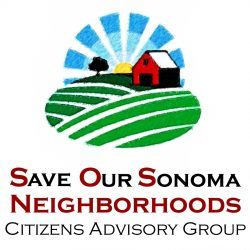Re: Response to Joint Local Governments’ Comments on Draft 2021 WMP Guidelines
California Wildfire Safety Advisory Board
Marcie Edwards, Chair
505 Van Ness Avenue
San Francisco, California 94102
wildfiresafetyadvisoryboard@cpuc.ca.gov
Dear Ms. Edwards and Board Members:
Several counties sent the attached June 15, 2020 letter to the California Wildfire Safety Advisory Board concerning the draft 2021 Wildfire Mitigation Plan Guidelines (“WMP”).
We support the comments in the Joint Local Governments letter (“JL”), which require electric utility companies to meet high standards. We wish to alert the board that many of the counties who advocate high standards for utilities implement unsafe policies in the wildland urban interface. We think counties should also meet high standards.
We live in Sonoma County, which dismally fails to uphold high fire safety standards. An April 7, 2020 BOF staff memorandum found that the exemptions in the ordinance for pre-1991 roads exceeds the allowable scope of exemptions in the Cal Fire regulations. During its May 5-6, 2020 meetings, the Board of Forestry and Fire Protection (“BOF”) refused to certify Sonoma County’s fire safety ordinance. The BOF decided that because the ordinance exempts all roads in the State Responsibility Area built before 1991, essentially all roads in the county’s unincorporated area, it does not meet or exceed Cal Fire regulations. Despite this, Sonoma County continues to apply the pre-1991 road exemption in approving development applications.
The Cal Fire regulations and the California Fire Code require, among other things, 20-foot wide roads and ban development on long dead-end roads. The overall objective is to require access roads for any new development to provide safe, concurrent civilian evacuation and fire apparatus ingress.
Despite rules that have been in effect for three decades, Sonoma County routinely approves commercial developments on roads that are 8-12 feet wide, as well as developments on long, narrow dead-end roads with steep drop-offs, some as long as 5 miles. The communities where these commercial facilities are located were under evacuation orders during the 2017 Nuns Fire, and many homes and other buildings burned there. Sonoma County does not find it “critically important” to “proactively decide to protect human life” (JL, p. 1) in its own permitting decisions. Instead, Sonoma County jeopardizes the health and safety of firefighters and residents of roads in high and very high fire hazard severity zones.
Sonoma County merely requires that a fire apparatus could likely drive on an access road. It does not even require that a fire apparatus can turn around to retreat from a life-threatening conflagration. For example, a recent fire inspection report for Los Alamos Road conducted by the county’s senior fire inspector concluded that access is sufficient because a hybrid vehicle could drive the 10-12-foot-wide private road to an existing structure. We agree with the counties’ call for improvements in the safety culture of utilities and to take safety seriously (JL, p. 3). In contrast, critical fire safety decisions in Sonoma County are made by the County Counsel’s office, which focuses on facilitating development, instead of staff in the Fire Prevention Division who are focused on fire prevention and safety.
We do not have specific information on the implementation of fire safety programs in Mendocino, Napa, Nevada, or San Luis Obispo counties. We do know that they, along with Sonoma County, are members of the Rural County Representatives of California (RCRC), which is lobbying the BOF on their behalf to undermine statewide fire safety. It is possible the four counties are unaware of RCRC’s efforts in this regard. During a recent BOF emergency rulemaking to revise certain aspects of the Cal Fire regulations, RCRC and Sonoma County attempted to insert a provision that would have gutted the Cal Fire regulations for parcel maps by exempting all pre-1991 roads. RCRC, and its member counties, seem to endorse a “race to the bottom” among California counties by encouraging them to compete for development by vying to allow the laxest fire road safety standards. Allowing development on unsafe roads in fire-prone areas is professed to be financially beneficial to counties. However, like de-energization for utilities, it “comes at great cost to the impacted communities” (JL, p. 2) and the public will “bear the brunt of ill-considered or poorly executed” decisions (JL, p. 3).
In conclusion, we support the WMP’s requirements for high standards for electric utilities. We hope the board will encourage counties to implement high standards in fire safety, just as it is expecting the companies it regulates to do so. Former Governor Brown noted that wildland fires are our “new normal.” In the aftermath of the inevitable future wildland fires, counties that have jeopardized the health and safety of residents will likely be viewed by plaintiffs’ attorneys as a “deeper pocket” for compensation than financially precarious electric utilities.
Thank you considering our views.
Sincerely,
Nancy and Brantly Richardson
Santa Rosa, California 95404
Attachment

Recent Comments